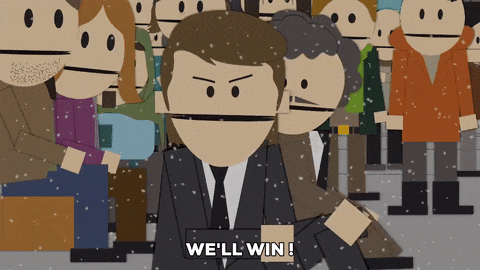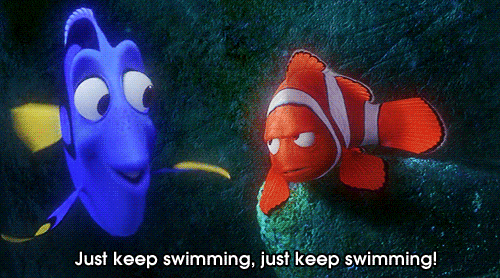This session has been incredibly difficult, with workload pressures leading to burnout. The challenges I’ve faced this session have highlighted the ways that effective leadership can support positive school culture, and this unit emphasised the importance of understanding leadership theory to advocate for our role to ensure effective practice.
One key idea is teacher-librarians should not be held back by their lack of formal leadership position, since good leaders have the vision and skills to inspire others to achieve a common goal and hold perceived influence regardless of title (Bush & Glover, 2014, p.554; Ezard, 2015; Gardner, 2013, p.18-19; Gleeson, 2016; Holmes et al., 2012, p.271, 276; Spencekao, 2013; Sutcliffe, 2013). Rather than relying on official authority, effective teacher-librarians should focus on developing a strong understanding of different leadership styles, integrating their traits to be responsive to their context’s specific needs (Bush & Glover, 2014, p.567; Smith, 2016, p.75-76). I greatly enjoyed learning about these leadership styles and recognised many aspects of Servant Leadership in my own practice (Lysaught, 2023a, 2023b, 2023c) due to its focus on service, community building, and empowering others (Arar & Oplatka, 2022, p.83-87; Blanchard & Broadwell, 2018; Crippen & Willows, 2019, p.171-172; Greenleaf, 2008, p.36). I particularly loved the ‘Continuum of Care’ concept (Reinsel Soulen, 2020), since showcasing my leadership by mentoring staff aligns well with my current position in the Teaching and Learning faculty.
 Image 1: Reinsel Soulen, 2020, p.39
Image 1: Reinsel Soulen, 2020, p.39
However, despite my natural inclination towards Servant Leadership, this subject taught me it’s important to step outside my comfort zone to ensure effective practice and to be truly responsive to my community’s needs. Moving forward, I plan to also draw on the traits of Instructional and Transformational Leadership, with their focus on improving student outcomes through instructional quality, innovation, and reflective practice (Arar & Oplatka, 2022, p.3-5; Holmes et al., 2012, p.276; Moir et al., 2014, p.36, 39). For instance, these leadership styles can be integrated within our role as technology experts to support time-poor staff and demonstrate our value to our school community (Johnson, 2019):

Image 2: adapted from Johnson, 2019
In schools where misconceptions about our roles abound, ETL504 emphasised the importance of promoting the varied nature of our work and different ways we can leverage these leadership traits to advocate for our positions (Boyd, 2021; Jones, 2021). Reminding staff that our work extends beyond books – especially to technology and wellbeing – and that we can alleviate their workload is a key aspect of leading from the middle which I plan to integrate into my future practice (Lysaught, 2023d, 2023b, 2023e, 2023f). Module 5.3’s self-reflection was useful, identifying that I should improve my practice by leading staff professional learning and continued blogging (Lysaught, 2023f).
ETL504 revealed that ongoing strategic planning projects professionalism (Markless et al., 2016; Wong, 2012); reminding me “don’t get angry, get strategic” (Boyd, 2021). I’ve improved my planning since my early amateur attempts (Lysaught, 2023h). Change fatigue and innovation overload are real threats in modern education (Clement, 2014; Dilkes et al., 2014; Holmes et al., 2012), and the various models summarised below were incredibly useful for understanding how to successfully manage change, allowing me to move forward in my own setting.

Image 3: Robbins et al., 2006

Image 4: adapted from Chow et al., 2019
Particularly, I found the focus on understanding stakeholder needs useful (Pratt, 2017). The two questions posed by Chow et al. (2019) and understanding resistance (Lancaster, 2019) will be at the forefront of my community consultation moving forward:

Image 5: adapted from Chow et al., 2019

Image 6: adapted from Lancaster, 2019
The importance of developing strong relationships with stakeholders, such as principals, was emphasised and helped me reframe my approach to ensure that my work was relevant to their vision. In future all library initiatives and budget submissions will align with the School Improvement Plan. Previously I’ve created an Annual Library Report, but didn’t know if my efforts were noticed (Lysaught, 2023i, 2023c). Inspired by ETL504, I created a Term 1 Library Snapshot which I published on social media, the newsletter, and library displays (Lysaught, 2023j) and received an email from the Principal thanking me.
Visibility is crucial!

Image 7: adapted from Softlink, 2017, p.3-11
Word count: 655
References:
Arar, K., & Oplatka, I. (2022). Advanced theories of educational leadership. Springer.
Blanchard, K., & Broadwell, R. (2018). Servant leadership in action. Berrett-Koehler.
Boyd, K. C. (2021). Advocacy: 2021 style & beyond. Knowledge Quest, 49(4), 26-31.
Bush, T. & Glover, D. (2014). School leadership models: What do we know? School Leadership and Management, 34(5), 553-571. https://doi.org/10.1080/13632434.2014.928680
Chow, A., Robinson, J., Paulus, L., Griffin, B., Smith, N. Z. & Watterman, A. (2019). From me to we: Seeing is believing. Knowledge Quest, 48(2), pp. E1-E7.
Clement, J. (2014). Managing mandated educational change. School Leadership & Management, 34(1), 39-51. https://doi:10.1080/13632434.2013.813460
Crippen, C. & Willows, J. (2019). Connecting teacher leadership and servant leadership: A synergistic partnership. Journal of Leadership Education, 18(2), pp. 171-180.
Dilkes, J., Cunningham, C. & Gray, J. (2014). The new Australian Curriculum, teachers and change fatigue. Australian Journal of Teacher Education, 39(11). https://doi:10.14221/ajte.2014v39n11.4
Ezard, T. (2015). Building trust and collaboration – Tracey Ezard [Video]. Youtube. https://youtu.be/kUkseAdKyek
Gardner, J. W. (2013). The nature of leadership. In M. Grogan (Ed.). The Jossey-Bass reader on educational leadership (3rd ed., pp. 17-27). John Wiley & Sons.
Gleeson, B. (2016, November 9). 10 unique perspectives on what makes a great leader. Forbes. https://www.forbes.com/sites/brentgleeson/2016/11/09/10-unique-perspectives-on-what-makes-a-great-leader/#276777b95dd1
Greenleaf, R. K. (2008). Greenleaf on Servant-Leadership: Who Is the Servant-Leader? The International Journal of Servant-Leadership, 4(1), 31–37. https://doi.org/10.33972/ijsl.234
Holmes, K., Clement, J. & Albright, J. (2012). The complex task of leading educational change in schools. School Leadership & Management, 33(3), 270-283. https://doi.org/10.1080/13632434.2013.800477
Johnson, D. (2019). The school librarian: Your ultimate digital resource. Educational Leadership, 76(5). https://www.ascd.org/el/articles/the-school-librarian-your-ultimate-digital-resource
Jones, A. (2021, May 6). School library advocacy: The time is now. Knowledge Quest. https://knowledgequest.aasl.org/school-library-advocacy-the-time-is-now/
Lancaster, I. (2019, January 26). 5 strategies for managing change in schools. TeachThought. http://www.teachthought.com/uncategorized/5-strategies-for-managing-change-in-schools/
Lysaught, D. (2023a, March 12). ETL504 2.2 leadership theory. All You Read Is Love. https://thinkspace.csu.edu.au/allyoureadislove/2023/03/12/etl504-2-2-leadership-theory/
Lysaught, D. (2023b, March 21). ETL504 2.3: Promoting the teacher-librarian’s visibility and value. All You Read Is Love. https://thinkspace.csu.edu.au/allyoureadislove/2023/03/21/etl504-2-3-promoting-the-teacher-librarians-visibility-and-value/
Lysaught, D. (2023c, May 7). ETL504 5.2 & 5.3: Servant leadership. All You Read Is Love. https://thinkspace.csu.edu.au/allyoureadislove/2023/05/07/etl504-5-2-5-3-servant-leadership/
Lysaught, D. (2023d, April 8). ETL504 2.3: Leadership concept map. All You Read Is Love. https://thinkspace.csu.edu.au/allyoureadislove/2023/04/08/etl504-2-3-leadership-concept-map/
Lysaught, D. (2023e, March 5). ETL504 2.1: Organisation theory introduction. All You Read Is Love. https://thinkspace.csu.edu.au/allyoureadislove/2023/03/05/etl504-2-1-organisation-theory-introduction/
Lysaught, D. (2023f, February 25). ETL504 1.1: How school leaders can build hope and prevent teacher burnout. All You Read Is Love. https://thinkspace.csu.edu.au/allyoureadislove/2023/02/25/etl504-1-1-how-school-leaders-can-build-hope-and-prevent-teacher-burnout/
Lysaught, D. (2023g, May 7). ETL504 5.3 Future ready librarian self-reflection. All You Read Is Love. https://thinkspace.csu.edu.au/allyoureadislove/2023/05/07/etl504-5-3-future-ready-librarian-self-reflection/
Lysaught, D. (2023h, April 27). ETL504 Strategic planning and setting goals: An amateur’s journey. All You Read Is Love. https://thinkspace.csu.edu.au/allyoureadislove/2023/04/27/etl504-strategic-planning-and-setting-goals-an-amateurs-journey/
Lysaught, D. (2023i, March 5). Annual library report. All You Read Is Love. https://thinkspace.csu.edu.au/allyoureadislove/2023/03/05/annual-library-report-2022/
Lysaught, D. (2023j, May 2). ETL504 Advocacy and visibility. All You Read Is Love. https://thinkspace.csu.edu.au/allyoureadislove/2023/05/02/etl504-advocacy-and-visibility/
Markless, S., Bentley, E., Pavey, S., Shaper, S., Todd, S., Webb, C., & Webb, C. (Carol). (2016). The innovative school librarian (S. Markless, Ed.; Second edition.). Facet.
Moir, S., Hattie, J. & Jansen, C. (2014). Teacher perspectives of ‘effective’ leadership in schools. Australian Educational Leader, 36(4), 36-40.
Pratt, A. (2017). The challenge of implementing change. SCIS Connections, (103). https://www.scisdata.com/connections/issue-103/the-challenge-of-implementing-change
Reinsel Soulen, R. (2020). The continuum of care. Knowledge Quest, 48(4). 36-42.
Robbins, S.P., Bergman, R., Stagg, I. & Coulter, M. (2006). Foundations of management. Pearson Education. In ETL504 Module 4. Strategic and Operational Planning. Interact 2. https://interact2.csu.edu.au
Smith, B. (2016). The role of leadership style in creating a great school. SELU Research Review Journal, 1(1), 65-78. https://selu.usask.ca/documents/research-and-publications/srrj/SRRJ-1-1-Smith.pdf
Softlink (2017). School libraries share: Ideas for school-wide collaboration. https://www.softlinkint.com/assets/img/banners/Whitepaper_-_School_libraries_share_ideas_for_collaboration.pdf
spencekao. (2013, April 6). Instructional leadership. [Video]. YouTube. https://www.youtube.com/watch?v=efzXDk1–4w
Sutcliffe, J. (2013, September 24). The eight qualities of successful school leaders. The Guardian. https://www.theguardian.com/teacher-network/teacher-blog/2013/sep/24/eight-qualities-successful-school-leaders
Wong, T. (2012). Strategic long-range planning. Library Media Connection, 31(2), 22-23.






 Image 1: Reinsel Soulen, 2020, p.39
Image 1: Reinsel Soulen, 2020, p.39







